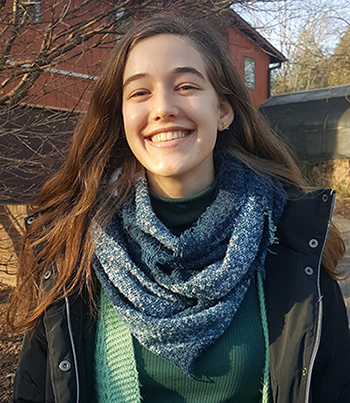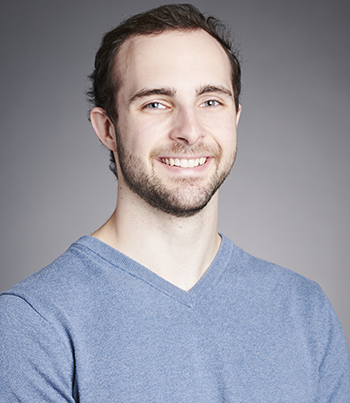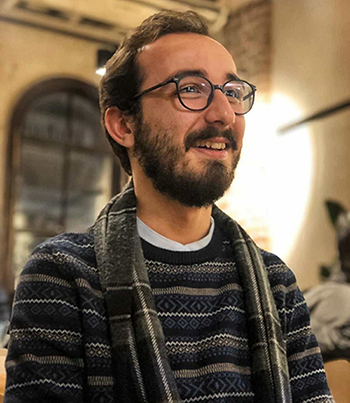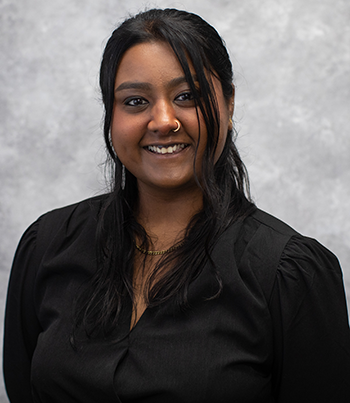Dowd Fellowship encourages ambitious student research
Four Ph.D. students in the College of Engineering have received funding to pursue research on valuable, relatively unexplored topics.
For more than 20 years, a generous gift from alumnus Philip Dowd (MSE ’63) and his wife, Marsha, has allowed select doctoral students to grow their research interests from ambitious, early-stage ideas into year-long immersive experiences. The Dowd Engineering Seed Fund for Graduate Student Fellowships aims to support research in areas that haven’t received much prior attention or funding. The loftier a goal, the better. This year’s fellowship recipients were chosen from a group of 16 applicants and are sourced from four different departments within the College of Engineering.
The Dowd Fellowship covers a full year of doctoral expenses so graduate students can pour all their energy into their projects. The 2023 recipients are looking to make waves in sectors like healthcare, manufacturing, and artificial intelligence.
Alison Bartsch

SculptBot: Learning to predict plasticine deformation dynamics for robotic sculpting
Alison Bartsch is interested in applying the untapped potential of machine learning models to make robots better at tasks like grasping and manipulation, which inspired her to join CMU’s Mechanical and AI Lab (MAIL). Bartsch learned as an undergraduate that many of the more recent advancements in robotics were, in fact, powered by machine learning, which informed her decision to begin her Ph.D. studies in 2021 with Amir Barati Farimani, an associate professor of mechanical engineering, as her advisor.
Bartsch is using the Dowd funds to explore how robots can better handle deformable objects like clay, rubber, cloth, and even human tissue and skin. Her current work focuses on applying machine learning to predict how 3D items would be warped or deformed by robotic grasps, which can allow researchers to better understand the interactions between robots and objects and potentially influence several industries.
“This project could have a widespread impact on the future by laying the groundwork for potential advancements in surgical robots, household and assistive robots, and autonomous manufacturing,” Bartsch said.
Derek Dardzinski

Structure prediction of lead halide perovskite interfaces
Derek Dardzinski began his Ph.D. studies in 2020 and is advised by Noa Marom, associate professor of materials science and engineering. Dardzinski’s ongoing research project serves as a testament to the idea that while machine learning continues to grow more sophisticated, it isn’t always the best approach for some problems. Dardzinski is using classical physics to screen for interfaces between two materials that may give rise to unique properties. This project is in collaboration with researchers from the Italian Institute of Technology, who want to use Dardzinski’s lattice software matching package to guide their work towards synthesizing new nanocrystalline interfaces.
“The goal is to create interfaces between two materials that give rise to new properties that don’t exist in either material alone,” Dardzinski said. His key deliverable will be a more advanced Python software package that can predict whether synthesis between certain nanoparticles is possible.
“With the help of the grant, we will be able to run a number of case studies on different materials systems,” Dardzinski said. “A breakthrough would lead to more efficient solar cells, better display technologies, and more advanced nanoparticles for cancer treatment.”
Caner Dikyol

Light-pipe FRESH 3D bioprinting for advanced engineering of functional tissues
Caner Dikyol began his Ph.D. experience in 2020, and finding a cure for at least one life-threatening disease is the driving force behind his career in biomedical engineering, specifically in the area of regenerative biomaterials and therapeutics. With the help of the Dowd Fellowship, Dikyol is looking to continue improving 3D bioprinting for application in tissue engineering. As it stands now, biofabrication is able to replicate the geometry of human tissues but is less adept at recreating their spatial heterogeneity.
“We have recently developed a novel technique called light-pipe FRESH 3D bioprinting, which incorporates photochemistry into the bioprinting process,” Dikyol said of his ongoing research. “With this new approach, biomechanical and biochemical composition of tissue scaffolds can be modified by layer-by-layer patterning photoactivatable biomaterials using a light delivered from the tip of a fiber-optic cannula. We plan to use this method to create tissues that have spatial heterogeneity.”
Advised by Adam Feinberg, a professor of biomedical engineering and materials science and engineering, Dikyol is eager to take bioprinting to the next level so that it can be a viable resource for treating many different diseases and medical conditions.
Preom Sarkar

Resource recovery and biological treatment of selenium in coal combustion residual wastewaters
Preom Sarkar is pursuing a Ph.D. in environmental engineering. Her project for the Dowd Fellowship combines her interests in microbiology and environmental remediation by identifying relevant selenium oxyanion reducing bacteria in hopes of removing selenium from coal wastewaters. Small changes in the concentrations of selenium in the environment can cause detrimental ecological consequences. Anthropogenic selenium pollution is due to coal combustion, which still contributes to about one-fifth of U.S. electricity generation.
Sarkar’s research is focused on improving biological treatment processes for flue gas desulfurization (FGD) wastewater. The EPA has placed limits on the amount of selenium that can be discharged from this wastewater; however, as Sarkar notes, more than half of operating treatment systems for coal plants do not meet discharge limits. Optimizing biological treatment to target selenium in FGD wastewater is crucial for the health of the environment.
